#fun fact ! every anime character named ed is trans
Photo
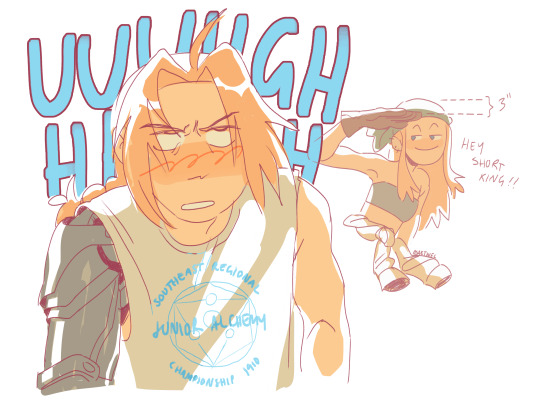
if girls tease you that means they like you!!!
[IMAGE ID: digital art of Edward Elric and Winry Rockbell from Fullmetal Alchemist. Ed, wearing a tank top, heads towards the camera and rolls his eyes, saying "ugh" in all caps. Behind him, Winry is holding up her hand to show that he's shorter than her, and she's saying, "hey short king!" end description.]
#edward elric#winry rockbell#fullmetal alchemist brotherhood#fullmetal alchemist#fma#fmab#fanart#digital#may21#actual art#fun fact ! every anime character named ed is trans#my sample size is two (2) pls let me know if u have more eds to add#50n#100n#500n
2K notes
·
View notes
Text

...and the unironic joys of better living through chemistry
How do I love Venom: The Hunger, let me count the ways…

It’s by far the shippiest Venom/Eddie story to come out of the character’s heyday. It’s the only story of the era to treat Venom’s violent wild-animal instincts not as an immutable fact, but as something that can be managed. It pulls off an aesthetic like nothing else that was being done at the time.
And then there’s the way it says, Does the world around you seem sinister and foreboding? Do you lie awake at night contemplating metaphorical oceans of despair? Well shit, son – have you considered you may be suffering from a mundane neurochemical imbalance, and a round of the right meds could clear that right up for you?
It does all this without breaking the atmosphere, without a whiff that our story has been interrupted for a Very Special Message about mental health.
In the near-decade since I was first prescribed anti-depressants, I don’t think I’ve read another story that lands the message “Sometimes, it’s not you, it’s just your brain chemistry,” so well.

Fair warning: if you have not read The Hunger, I am about to spoil every major plot point. If you have, well, maybe I can still give you a new appreciation for a few details you might have missed.
It’s a strange book, whatever else you take from it. It’s almost the only thing either author or artist contributed to the Venom canon, and it’s so different stylistically and tonally from the 90′s Venom norm that it feels like a tale from some noir-elseworlds setting instead of 616 canon. When you take risks that big with a property, you leave yourself precious little landing space between 'unmitigated triumph’ and ‘abject failure’: if this book hadn’t absolutely nailed it, I’d be dismissing it as edgy, OOC dreck. Fortunately, if The Hunger is nothing else, it is a story that $&#@ing commits – to basically everything it does.
Now, I'm not going to tell you Venom: The Hunger is a story about overcoming depression, because I don't know whether author Len Kaminski even thought about it that way while working on it. There's always space for other readings, and this one take is not gospel. That said: holy shit is this thing unsubtle with its metaphors. And with that in mind, let’s start by talking a little about Kaminski’s take on Eddie himself.
As I may have mentioned before, I like to divide 90′s Eddie into two broad personas: the Meathead, and the Hobo.
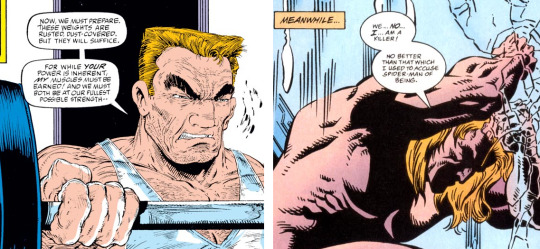
Kaminski’s Eddie nominally belongs in the angsty, long-haired Hobo incarnation, but that’s a bit of a simplification: this version certainly has plenty of angst and plenty of hair to his name – but nowhere, not even at his lowest ebb, does he doubt that he and his Other are meant for each other, which is usually Hobo!Eddie’s primary existential quandary.
He’s also taken up narrating his own life like a hardboiled PI.
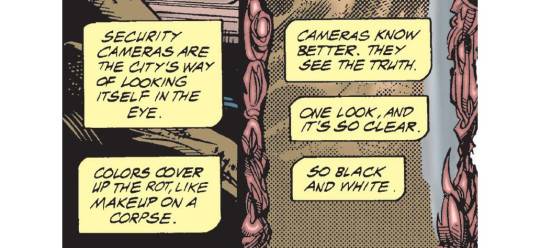
So that’s... novel.
The only other time Eddie’s sounded like this is, er, in that one other Venom one-shot Kaminski penned (Seed of Darkness, a prequel that sadly isn’t in The Hunger’s league), so I think we can safely file it under authorial ticks.

Then again, Hobo!Eddie’s always been one melodramatic SOB, so maybe this is just how he’d sound after learning to channel his angst into his poetry. You can’t argue it fits the aesthetic, anyway.
We’d also be remiss not to mention Ed Halsted’s art, which I can only describe as gothic-meets-noir-meets-H.R.-Giger. Never before or since has the alien symbiote looked this alien: twisted with Xenompoph-like ridges and veins.
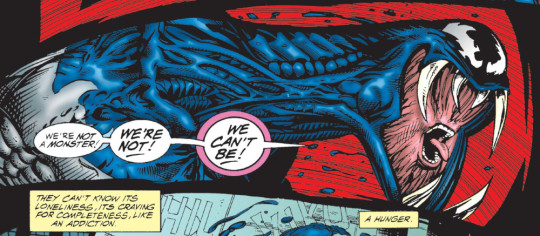
But Halsted doesn’t treat Venom to all that extra detail in every panel. Instead, the distortion tends to appear when the symbiote is separated from Eddie or out of control – and I doubt you need me to walk you through the symbolic importance of that creative decision. More importantly, Halsted’s art provides exactly the class of visuals that Kaminski’s story needs.
Did I mention this is a horror story? You might be surprised how few Venom stories really fit that genre, but if all those adjectives about Halsted’s style above didn’t clue you in, this is one of them.
Anyway, with that much context covered, let’s get into the main narrative of this thing.
As our first issue opens, Eddie’s world has become a dark and foreboding place. He’s not sleeping, though he mostly brushes this off. (Fun fact: trouble sleeping is one of those under-appreciated symptoms of depression. Additional fun fact: the first doctor ever to suggest I might be suffering from depression was actually a sleep specialist. You can guess how that appointment was going.)
Just to set our scene, here’s all of page 1.

Eddie’s narration has plenty of (ha) venom for his surroundings, but the visuals are here to back him up: panels from Eddie’s POV are edged in twisted, fleshy borders and drained of colour, the people rendered as creepy, goblin-like creatures. A couple of later scenes go even further to contrast Eddie-vision with what everyone else is seeing:
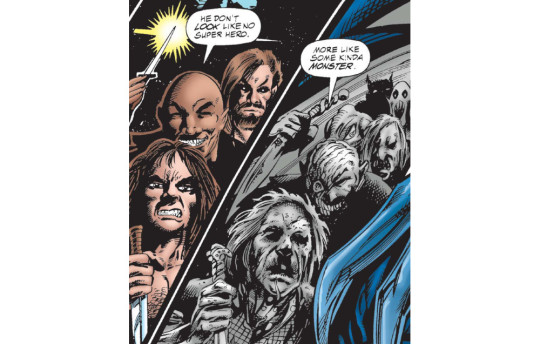
As depictions of depression go this is a little on the nose, but then, you don’t read a comic about a brain-eating alien parasite looking for subtlety, do you?
Eddie doesn’t see himself as depressed, of course. As far as he’s concerned, he’s seeing the world’s true face: it’s everyone else who’s deluding themselves. He’s still got his symbiote, so he’s happy. He’s yet to hit that all-important breaking point where something he can’t brush off goes irrevocably wrong.
But he’s also starting to experience these weird... cravings.
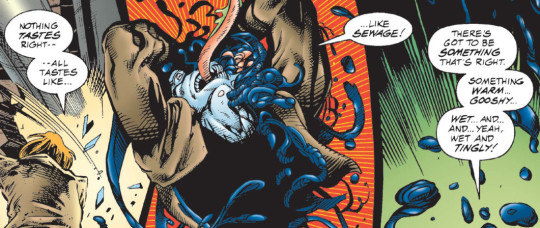
He just can’t put a name to exactly what he’s craving until a routine bar fight with a couple of thugs takes a turn for the horrific.
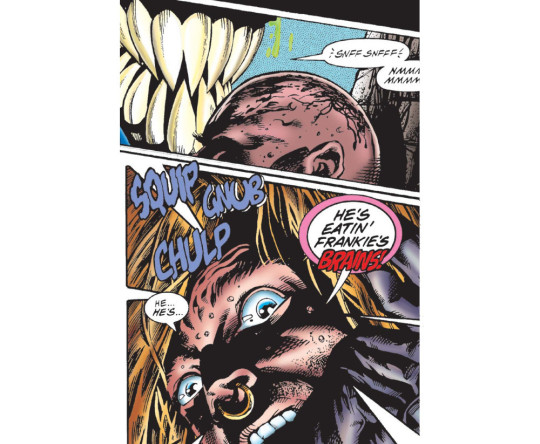
(I include this panel partly to point out even in The Hunger, the goriest of all 90′s Venom titles, you’re still not going to see brains getting eaten in any graphic detail. We don’t need to to get the horror of the moment across. The 90′s were a more innocent time.)
Eddie himself is horrified when he comes back to himself and realises what he’s done.

Or rather, what his symbiote’s just made him do.
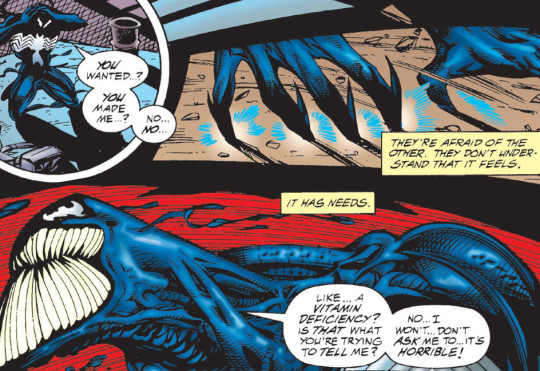
Kaminski doesn’t keep us in suspense about why, though. Eddie may have just done something horrific, but there’s a reason, and it’s as mundane as a vitamin deficiency. He’s bonded to an alien creature, after all, and his symbiote is craving a nutrient which just happens to be found in human brains. And if Eddie can’t or won’t help it meet that need, it’ll do so alone.
Now, giving us that explanation so quickly is an interesting creative decision: this is a horror story, and horror lives in what we don’t know. Wouldn’t it be all the more horrifying had the symbiote been unable to explain what’s going on, leaving Eddie without the first real clue as to where this monstrous new hunger had come from?
The Hunger doesn’t take that route though, and I love it. Eddie isn’t a monster, this isn’t his fault: he has a fucking condition, and wallowing in his own moral failings is going to get him nowhere. You might as well try to cure scurvy or rickets with positive thinking. Just like depression can make you feel like an utter failure at the most basic parts of being human, and all the affirmations in the world won’t fix it when it’s fundamentally your brain chemistry that’s the problem. Or like addicts aren’t weak-willed for struggling not to relapse, they’re dealing with genuine chemical dependency – or even like how someone who’s trans isn’t at fault for being unable to reconcile themselves to the bodies and the hormones they were born with by pure force of trying. Free will is more than an illusion, but we’re all messy, biological organisms underneath, and your own brain and biochemistry can and will fuck you over in a hundred wildly different ways for as many wildly different reasons and it’s not your fault.
We aren’t monsters. But if we do, sometimes, find ourselves identifying with the monster, there might be a reason for that.
(Ahem)
I’m just saying, that’s fucking powerful, and we need more stories that say it.
Anyway, in case you missed it during that tangent, issue #1 closes with the symbiote having torn Eddie’s heart in two itself free to go hunting brains without him.
I’m trying not to get too sidetracked at this point talking about Kaminski’s take on the symbiote itself. Suffice to say there are broadly two schools of thought on how it ought to function while separated from its host: the traditional ambulatory-slime-puddle version, and the more recently popular alternative where anything-you-can-do-with-a-host-you-can-also-do-without-one. I’m not much of a fan of the latter, personally: if your symbiote doesn’t actually need a host, I feel you’ve sort of missed the point. (The movie takes the route of saying symbiotes can’t even process Earth’s atmosphere without a host, which is a great new idea that appears nowhere in the comics, and I love it. Hosts or GTFO, baby!)
Kaminski has his own take, and I can only wish it had caught on. Without Eddie, the symbiote becomes an ever-shifting insectoid-tentacle-snake-monstrosity, driven by an animalistic hunger. It’s many things, but it’s never humanoid.

If you absolutely must have your symbiote operating minus a host, I feel this is the way to do it: semi-feral, shapeless and completely alien (uncontrollable violence and cravings for brains to be added to taste).
Issue #2 comes to us primarily through the perspective of the mild-mannered Dr. Thaddeus Paine of the Innsmouth Hills Sanitarium (yes, really).

Yeah, he’s not fooling anyone. Meet our official villain! He joins our story after Eddie is picked up by the police and handed off to the nearest available institution, on account of how completely sane and rational he’s been acting.
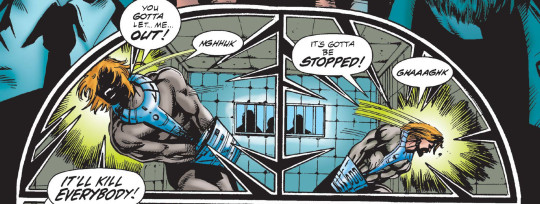
Naturally, Dr. Paine soon has copious notes on Eddie’s ‘crazy’ story about his psychic link to a brain-eating alien monster. Fortunately for Eddie, Paine also runs some tests and makes an interesting discovery.
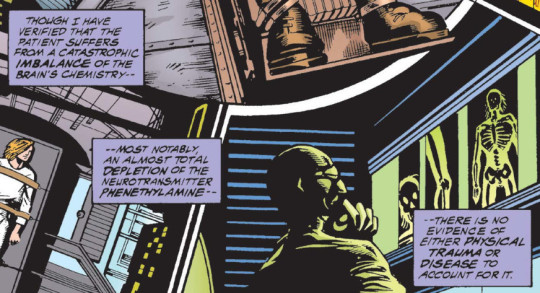
Congratulations, Venom: the ‘vitamin’ you were missing officially has a name!
Finding the right meds isn’t always this easy. I got lucky – the first ones my psych put me on worked pretty well – but I have plenty of friends who weren't so lucky. In fact, the treatment for Eddie's problems is so straightforward it arguably has more in common with, say, endocrine disorders like thyroid conditions or Addison’s disease, which differ from clinical depression but present many similar symptoms (but can sadly be just as much of a bitch to get correctly diagnosed – please do read author Maggie Stiefvater’s account of the latter when you get the chance, because forget Venom, that is a horror story).
‘True’ depression remains much less well understood by medicine, either in its causes or how to effectively treat it. But simply having a name for what was wrong with me made so much difference, and that’s an experience I imagine anyone who’s dealt with any long undiagnosed medical condition could relate to. It put my life in context in a way nothing else had in years.
(I can’t speak to the accuracy of the way phenethylamine is portrayed in this comic – a quick google suggests there may be some real debate that phenethylamine deficiencies have been overlooked as a contributor to clinical depression, but having no medical background, that one’s well beyond me. Either way, scientific accuracy really doesn’t matter in this context – it’s how it works in-universe for story purposes that we should pay attention to.)
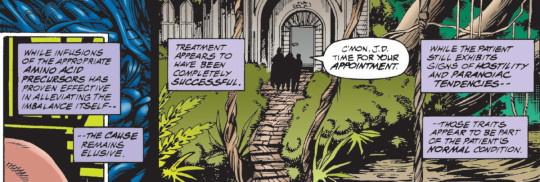
Since this issue is mostly from Paine’s POV, we don’t get Eddie’s reaction to having a healthy amount of phenethylamine sloshing around in his brain again, just the assurance that treatment appears to be ‘completely successful’.
He’s still a paranoid, hostile bastard though. Meds can turn your life around, but they won’t make you not you.
But even if Eddie’s feeling better, he’s still psychically linked to someone who isn’t. Symbiote-vision still comes through drained of colour and edged in viscera.
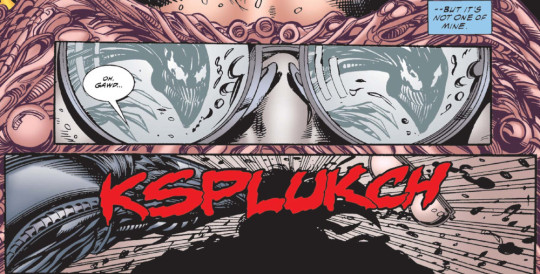
That’s the thing about meds: they won’t solve all your problems overnight. If you’ve been depressed for a while, there are good odds you have problems stacking up. But working meds can be a godsend when it comes to getting you into a space where you can deal with your problems again, whether said problems are doing-your-laundry or all the way into not-giving-up-completely-and-just-accepting-you’ll-die-alone-on-the-street.
For Eddie, ‘dealing with his problems’ begins with stealing a keycard and busting out of the asylum.

Of course, that’s the easy part. How do you solve a problem like a feral symbiote? Like any good 90′s comic book protagonist, Eddie tackles it by putting on his big-boy camouflage pants and kitting himself out with weapons and pouches while quoting “If you live something, set it free. If it doesn’t come back, hunt it down.”
We can add this to the list of things I love about this comic. Even if The Hunger is a weirdly-stylistic tract about depression at heart, it’s also still a goddamn 90′s Venom comic, and not ashamed to be.
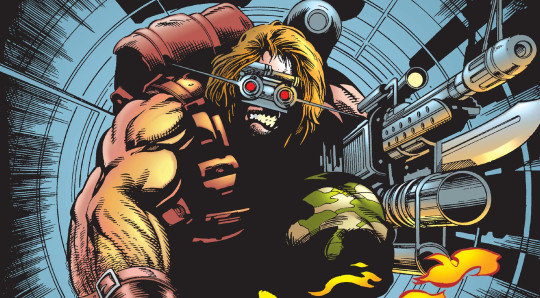
We’re into issue #3 now, and back to hearing the story from Eddie’s POV.
Eddie is very much aware that his symbiote has murdered innocent people while they’ve been separated. Even if this is the result of extreme circumstances, there’s a good case to be made that the symbiote is too dangerous to be allowed to live. Plenty of heroes would treat it like a rabid dog at this point.
But Eddie isn’t a hero, he’s a mess of a character and an anti-hero at best, so we don’t have to hold him to the same standard. He’s well aware his symbiote may be too far gone to save, that he may have to put it down – but that’s only his backup plan. He wants to help it. He wants it back. He’s down in that sewer with screamers and a flamethrower because he knows all his symbiote’s weaknesses, but he’s also carrying a large jar of black-market synthesised phenethylamine, because if he can just get close enough...
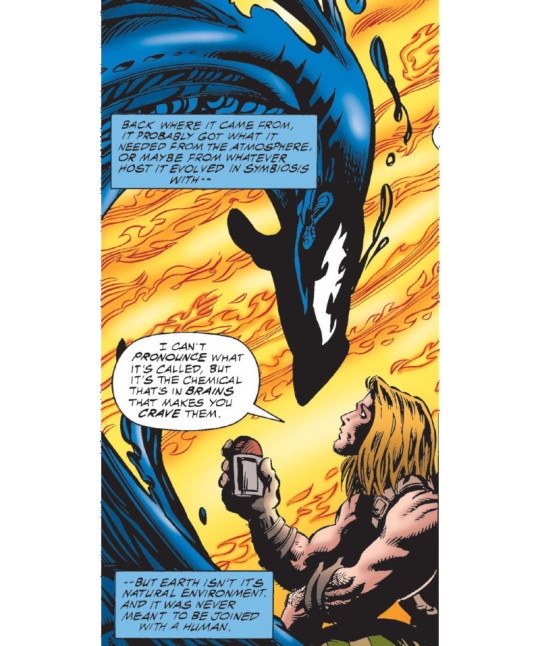
Depression can’t make you a literal monster, but it can make you an asshole. Miserable to be around, lacking even the energy to care who else you’re hurting. The depression doesn’t excuse that, but it makes everything harder, and it’s that much easier to sink back into your spiral when everyone around you has given up. It can make you think everyone around has given up even if that isn’t true.
So to have Eddie here say, in effect, I don’t care how many people you’ve eaten, I know it wasn’t your fault. I still love you. You’re still worth fighting for – god, does that get me right in the id.
There’s still a whole issue left at this point – we’ve still got to deal with our real villain, Dr. Paine, who we’ve just learned is into eating brains himself and torturing his patients recreationally, and who wants to capture the symbiote for his own purposes. There’s the scene where Eddie and his symbiote finally bond again, and Venom beats up all Paine’s goons while singing David Bowie because like I said, this is still a 90′s superhero comic and this is what Venom does.
But for our purposes, I'm going to skip to the penultimate page of the story, because the way it mirrors our opening page is really lovely.
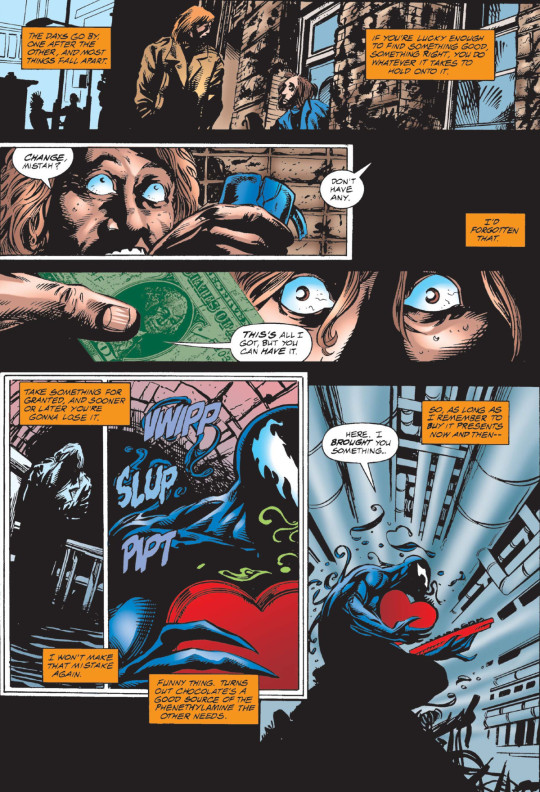
Remember that shot of Eddie dealing with a beggar back at the beginning of the story, thinking about how these people would 'get their despair all over you'? Here he is again, cheerfully forking over the last dollar in his pocket to the next man to ask him for change. For all the gothic atmosphere and gore, it’s moments like this that make The Hunger easily one of the most positive, uplifting Venom stories ever written. Funny, that. (I could probably write a whole other essay on sympathy for the homeless as a recurring motif in Venom stories, but that... well, whole other essay and all that.)
What’s Eddie learned from this experience? Don’t take your symbiote for granted. Is ‘symbiote’ a metaphor for mental health here, is paying attention to its needs an allegory for paying attention to your own? I still don’t know how literally Kaminski meant us to take this, but it’s a lovely note to end on no matter how you parse it.
At the end of the day, The Hunger isn’t flawless. The conflict with Paine ends on a thematic but slightly unsatisfying note. Eddie makes much of his symbiote's loneliness and desire for union, but when the two of them are finally reunited, the only reaction comes from Eddie's side. In fact, the symbiote seems to have no response to being able to return to Eddie at all, and that’s an omission that bugs me.

But Kaminski is more interested than any other writer of the era in the truly alien nature of the symbiote, in its relationship with Eddie from Eddie’s side, and though plenty of others talk about the symbiote's love/hate relationship with Spider-man, no-one else had the guts to portray their relationship this much like a romance.
And Venom: The Hunger is no less interesting in the context of Len Kaminski’s other work. You don't have to look far into his Marvel and DC credits to pick up that the guy has a real thing for monsters. (“All of my favourite characters are outlaws, misfits, anti-heroes,” he says, in one of the very few interviews I could find with him, “I wouldn't know what to do with Superman.”) He's written for vampires, werewolves, victims of mad science, and all of three at once, littering his work with biochemistry-themed technobabble, melodramatic monologues, gratuitous pop-culture references, and protagonists who must learn to embrace their inner demons. So The Hunger represents more than a few of his favourite running themes.

For our context, his more notable other work includes Children of the Beast, in which a werewolf must make peace between his human and animalistic sides, and The Creeper, in which a journalist must make peace with the crazy super-powered alter-ego sharing his body. In fact, The Creeper and The Hunger share so much DNA (including an evil doctor posing as a respected psychiatrist who uses hypnosis on our hero while he's trapped in a mental institution) that it’s quite the achievement that they still feel like such very distinct entities beyond that point.
The human alter-egos of both werewolf and Creeper even use prescription meds while wrestling with their respective dark sides. The difference, in both cases, is that these are stories where meds play their traditional fictional role – and that's a role that could be as easily filled by illegal drugs or alcohol without making any substantive difference. You see, if a protagonist is using them, it's a sign of unwillingness to tackle their 'real' problems. Even among work by the same author in the same genre, The Hunger represents an outlier. And that's just a little disappointing – at least to me.
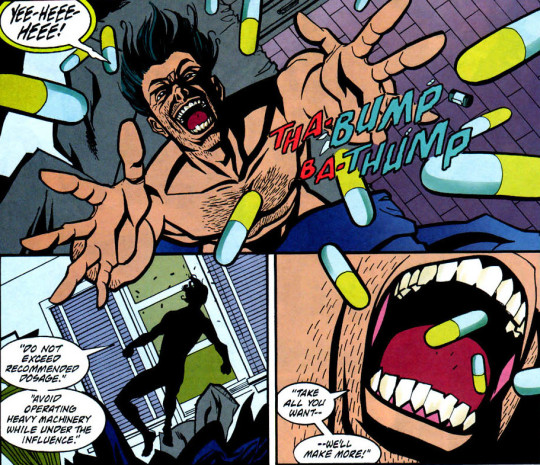
In real life, of course, prescription meds are no magical cure-all elixir. Depression meds that work for one person may not work for another, or may not keep working in the longer term. Everyone has heard stories about quack doctors who prescribe them to the wrong patients for the wrong reasons, about lives ruined by addictions to prescription painkillers, or the supposedly-damning statistics about how poorly SSRI's perform in rigorous clinical trials. The proper way to treat depression is obviously with lifestyle and therapy. People will still airily dismiss medications that we all know previous generations got along just fine without, or suggest that figures like Van Gogh would never have created great art if they hadn't been mad enough to slice off an ear. I mean, the fact you think you need those bogus mediations is probably the best possible sign of just how broken you are, right? Who do you think you’re kidding?
Our popular fiction loves stories about manly men who bury their trauma under a gruff, anti-social exterior and come back swinging at the world that broke them, bravely refusing even painkillers that might dull their manly reflexes. Other genres make space for broken people confronting their demons in grand moments of catharsis, finally breaking down into tears when someone gets through to make them face their problems. "I could barely make it out of bed in the mornings until I found a doctor who started me on this new prescription" is not only wildly counter to the accepted social narrative, it's a hard thing to know how to dramatise.

Even other Venom comics have been guilty of this.
Believe me, I recognise all of this, and just how much progress we've made in the last few decades. But I haven't the slightest doubt that for so many vulnerable people, the stigma against prescription medications does infinitely more harm than those same meds could ever do. And just having the right to externalise my problems into it's not you, it's your brain chemistry, may have helped me more than the meds themselves.
(And again, no, being prescribed SSRI's didn't fix me overnight, but I honestly don't know if all the talk therapy and tearful conversations with family members in the world could've got me as far as I've come without them.)

I love Venom: The Hunger. It's no-one's idea of high art, but it doesn’t need to be. There is a whole other post’s worth of things I love about it that I’ve already cut out this one as pointless tangents, and that may actually be it’s biggest drawback as a go-to example: I fully recognise that I would not be making this post if The Hunger hadn't also also grabbed me as a great bit of Venom canon, being the massive fan and shipper that I am. Other people who are just as desperate as me for more stories with the same core theme, but not into weird 90's comics about needy goo aliens, probably won't get nearly as much out of it as I have.
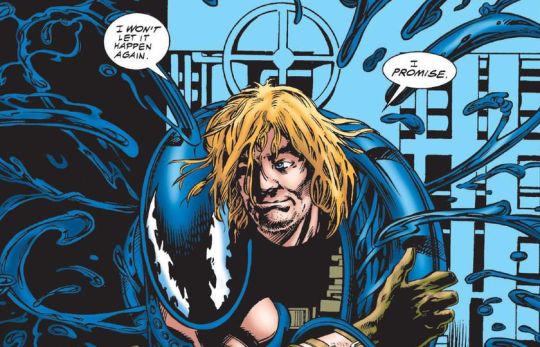
But if it sounds anything like your jam, maybe you'll enjoy it as much as I did.
If nothing else, it proves that you can make a viscerally satisfying story out of a message that shockingly unconventional. And you may even have people still discovering it and falling in love with it 25 years after the fact.
94 notes
·
View notes